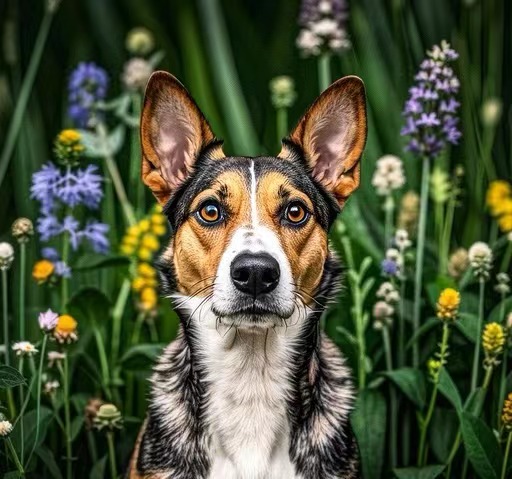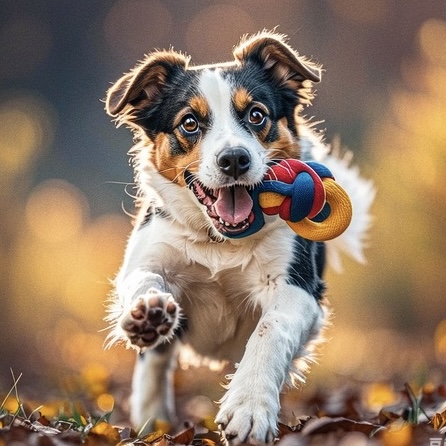
by TCMVET | Feb 4, 2024 | pet Chinese herbal medicine
Hemangiosarcoma, a prevalent and aggressive cancer in dogs, especially affects the spleen and heart. Traditional veterinary treatments often face limitations in managing this disease effectively. In light of this, Chinese Herbal Medicine (CHM) is emerging as a beacon of new hope. This article explores how CHM offers a complementary and holistic approach to treating dogs with hemangiosarcoma, enhancing their quality of life and potentially extending survival.
Understanding Hemangiosarcoma in Dogs
Hemangiosarcoma is a malignancy originating from the blood vessel cells, often leading to life-threatening tumors. It predominantly affects the spleen and heart, but can also occur in the liver and skin. This cancer is notorious for its rapid progression and high metastatic rate, making early detection and effective treatment challenging.
The Rise of Chinese Herbal Medicine in Veterinary Care
Chinese Herbal Medicine, a significant component of Traditional Chinese Medicine (TCM), focuses on restoring the body’s balance and natural healing capabilities. Its principles revolve around harmonizing the Yin and Yang and enhancing Qi (vital energy). In veterinary oncology, CHM is gaining attention for its potential in supporting conventional cancer treatments and offering a holistic care approach.
Key Chinese Herbs for Treating Hemangiosarcoma
Several herbs are known in CHM for their potential benefits in cancer treatment:
- Astragalus (Huang Qi): Boosts the immune system and may inhibit tumor growth.
- Sargassum (Hai Zao): Believed to help reduce tumors and prevent metastasis.
- Ginseng (Ren Shen): A general health tonic that can improve energy levels, beneficial for dogs undergoing cancer treatment.
- Turmeric (Jiang Huang): Contains curcumin, known for its anti-inflammatory and potential anti-cancer effects.
- Dang Gui (Angelica Sinensis): Promotes blood health and circulation, vital for organ health.
Integrating CHM with Conventional Cancer Treatments
Integrating CHM into a canine cancer treatment plan requires careful coordination with a qualified veterinarian. This approach can complement traditional treatments such as surgery, chemotherapy, or radiation, potentially reducing side effects and improving overall well-being.
Efficacy and Safety
While the efficacy of CHM in treating canine cancers like hemangiosarcoma is still under research, numerous anecdotal evidence and some studies suggest positive effects. However, it’s crucial to ensure the safety and quality of the herbs used. Consulting with a veterinarian experienced in both conventional and herbal medicine is essential for the best care approach.
Chinese Herbal Medicine offers a novel and hopeful avenue in treating dogs with hemangiosarcoma. By incorporating these ancient remedies into modern veterinary practice, we can provide a more holistic and potentially more effective treatment strategy. This integration not only targets the cancer itself but also aims to improve the overall quality of life for our canine companions.

by TCMVET | Feb 3, 2024 | pet Chinese herbal medicine
In the evolving field of veterinary medicine, the use of Chinese herbs has gained attention for its potential in treating various canine cancers, including pancreatic cancer and oral neoplasms. This article explores the efficacy of Chinese herbal medicine in these contexts, offering insights into how this ancient practice can complement modern veterinary oncology.
Understanding Canine Pancreatic Cancer and Oral Neoplasms
Pancreatic cancer and oral neoplasms are among the more challenging conditions faced in veterinary oncology. These cancers are often aggressive and can significantly impact a dog’s quality of life. Traditional treatments include surgery, chemotherapy, and radiation, but these can have considerable side effects.
The Role of Chinese Herbal Medicine in Cancer Treatment
Traditional Chinese Medicine (TCM) has been used for thousands of years to treat various ailments. In the context of canine cancer, Chinese herbs are considered to support the body’s natural ability to fight disease and improve overall wellness.
Key Chinese Herbs Used in Canine Cancer Treatment
- Yunnan Baiyao: Known for its wound-healing and hemostatic properties, it’s often used in cases of bleeding tumors.
- Huang Qin (Scutellaria baicalensis): Possesses anti-inflammatory and anti-tumor properties.
- Turmeric (Curcuma longa): Contains curcumin, which has shown promise in reducing tumor growth and alleviating inflammation.
The Efficacy of Chinese Herbs in Clinical Studies
Research into the efficacy of Chinese herbs in treating canine cancers is ongoing. Some studies have shown positive results, including reduced tumor size and improved quality of life, but more rigorous, controlled studies are needed to establish their effectiveness conclusively.
Integrating Chinese Herbal Medicine with Conventional Treatments
An integrative approach that combines Chinese herbs with conventional cancer treatments can offer a holistic path to managing canine cancer. This approach aims to maximize the efficacy of treatment while minimizing side effects.
Consulting with Veterinary Professionals
When considering Chinese herbs for cancer treatment, it’s crucial to consult with a veterinarian skilled in both conventional and herbal medicine. This ensures a safe and personalized treatment plan for each dog.
The Future of Canine Cancer Treatment
The inclusion of Chinese herbal medicine in the treatment of canine cancers like pancreatic cancer and oral neoplasms represents an exciting frontier in veterinary medicine. As research advances, it could lead to more effective and less invasive treatment options for our canine companions.
The use of Chinese herbs in treating canine pancreatic cancer and oral neoplasms shows promise as a complementary approach in veterinary oncology. With ongoing research and an integrative treatment approach, these ancient remedies may play an increasingly significant role in improving the lives of dogs with cancer.

by TCMVET | Feb 3, 2024 | pet Chinese herbal medicine
The diagnosis of rapidly growing oral malignancies in dogs is a devastating one for pet owners. While traditional veterinary treatments focus on combating the disease, an increasing number of veterinarians and pet owners are turning towards herbal protocols to enhance the quality of life for these dogs. This article explores the use of herbal remedies as a supportive measure in the holistic care of dogs with oral cancer.
Understanding Rapidly Growing Oral Malignancies in Dogs
Oral malignancies in dogs, such as melanoma, squamous cell carcinoma, and fibrosarcoma, are often aggressive and can significantly impact a dog’s quality of life. Symptoms may include difficulty eating, pain, swelling in the mouth area, and general discomfort.
The Role of Herbal Medicine in Supportive Care
Herbal medicine, rooted in ancient practices, offers a complementary approach to modern veterinary care. The goal of using herbs in the context of cancer treatment is not necessarily to cure the disease but to provide symptomatic relief, improve overall well-being, and potentially slow the progression of the disease.
Common Herbs Used in Canine Oral Cancer Care
- Milk Thistle (Silybum marianum): Known for its liver-protective properties, it’s often used to support the liver during chemotherapy.
- Turmeric (Curcuma longa): Contains curcumin, which has anti-inflammatory and antioxidant properties that can help alleviate pain and reduce inflammation.
- Astragalus (Huang Qi): Used to boost the immune system and overall vitality of dogs undergoing cancer treatment.
Integrating Herbal Remedies with Conventional Treatments
Herbal remedies should be used in conjunction with conventional cancer treatments like surgery, chemotherapy, and radiation. The integration of herbal protocols aims to minimize side effects of these treatments and improve the dog’s quality of life.
Veterinary Consultation is Key
It’s crucial for pet owners to consult with a veterinarian knowledgeable in both oncology and herbal medicine. This ensures that any herbal protocol is safe, effective, and tailored to the individual needs of the dog.
Supporting Research and Evidence
While there is anecdotal evidence supporting the benefits of herbal remedies in cancer care, more scientific research is needed. Veterinary oncologists and herbalists are increasingly studying the role of these remedies in supportive cancer care.
The Importance of a Holistic Approach
A holistic approach, addressing both the physical and emotional well-being of the dog, is essential. This includes not just medical treatment, but also diet, environment, and the emotional support that the dog receives at home.
Herbal protocols offer a promising avenue for enhancing the quality of life in dogs with rapidly growing oral malignancies. By providing supportive care that complements traditional treatments, these natural remedies can play a crucial role in the holistic care of our canine companions.

by TCMVET | Feb 3, 2024 | pet Chinese herbal medicine
Oral cavity cancer in domestic animals is a significant health issue that affects numerous pets globally. This article provides a comparative study of Eastern and Western approaches to treating this disease, highlighting the strengths and potential synergies of both methods. The goal is to offer pet owners and veterinary professionals insights into a more holistic approach to cancer treatment.
Understanding Oral Cavity Cancer in Pets
Oral cavity cancer in pets, particularly dogs and cats, can manifest as tumors in the mouth, gums, and lips. These tumors can be aggressive and may require immediate attention. Early detection and a comprehensive treatment plan are crucial for the best possible outcomes.
Western Approach to Treatment
The Western medical approach typically involves a combination of surgery, chemotherapy, and radiation therapy. These methods aim to remove or reduce the size of the tumor and prevent its spread.
- Surgery: Often the first line of treatment, it involves the removal of the tumor and surrounding tissues.
- Chemotherapy: Uses drugs to kill cancer cells or slow their growth.
- Radiation Therapy: Involves the use of high-energy rays to destroy cancer cells.
Eastern Approach to Treatment
Eastern medicine, particularly Traditional Chinese Medicine (TCM), offers a different perspective, focusing on balancing the body’s energy and enhancing its natural healing capabilities.
- Herbal Therapy: Utilizes a variety of herbs known for their anti-cancer and immune-boosting properties.
- Acupuncture: Aimed at relieving pain and improving the body’s natural energy flow.
- Diet and Lifestyle Changes: Focuses on strengthening the body’s overall health through nutrition and environment.
Integrating Eastern and Western Approaches
An integrated approach can offer the best of both worlds. For instance, herbal therapy and acupuncture can be used alongside conventional treatments to mitigate side effects and improve the animal’s quality of life.
Comparative Advantages
- Western Treatments: More effective in immediate tumor reduction and providing quick responses.
- Eastern Treatments: Focus on long-term health, immunity enhancement, and minimizing side effects.
The Role of Veterinary Professionals
It’s essential to work with a veterinary oncologist and a practitioner skilled in TCM to develop a balanced and effective treatment plan. This collaboration ensures that treatments from both spheres complement each other.
Case Studies and Research
While there are numerous anecdotal success stories, more scientific research is needed to fully understand and validate the efficacy of an integrated approach. Ongoing studies and clinical trials are vital in this field.
A comparative study of Eastern and Western treatments for oral cavity cancer in domestic animals suggests that an integrated approach could offer enhanced benefits. By combining the immediate effectiveness of Western medicine with the holistic, long-term focus of Eastern practices, pets can receive comprehensive care that addresses both the symptoms and the root causes of cancer.

by TCMVET | Feb 3, 2024 | pet Chinese herbal medicine
When it comes to treating undifferentiated malignant oral tumors in dogs, pet owners often seek out less traditional and more holistic treatment options. One area of growing interest is the use of herbal remedies, which have been utilized in human medicine for thousands of years and are now gaining attention in veterinary oncology. This article delves into how herbal remedies are being explored to support dogs with this challenging diagnosis.
Understanding Undifferentiated Malignant Oral Tumors in Dogs
Undifferentiated malignant oral tumors are aggressive growths in the oral cavity that lack a distinct cellular origin. This makes them particularly challenging to treat as they do not respond to standard therapies as predictably as more differentiated tumors. Recognizing the signs early on, which may include difficulty eating, oral bleeding, or noticeable mass growth, is crucial for timely intervention.
The Promise of Herbal Remedies
Herbal remedies in veterinary medicine are not meant to replace conventional treatments but rather to complement them. The goal is to use herbs to support the overall health of the dog, potentially reduce tumor growth, and improve the quality of life. Herbs such as Neem, Turmeric, and Milk Thistle have properties that are being studied for their anti-cancer potential.
Neem: A Potent Plant with Anti-Cancer Properties
Neem has been recognized for its medicinal properties, including its role as an anti-inflammatory and potential anti-cancer agent. It’s thought to help modulate the immune response, which could be beneficial in managing oral tumors.
Turmeric: Curcumin and its Therapeutic Effects
Turmeric, and specifically the compound curcumin found within it, has been extensively studied for its anti-inflammatory and anti-oxidant properties. There is growing evidence to suggest it may help fight cancer by inhibiting tumor growth and metastasis.
Milk Thistle: Supporting Liver Function During Treatment
Milk Thistle is best known for its liver-protective effects, which is particularly beneficial for dogs undergoing chemotherapy or taking medications that may be hepatotoxic. It may help prevent liver damage and support detoxification pathways.
Integrating Herbal Remedies with Conventional Care
When exploring the use of herbal remedies, it is essential to do so under the guidance of a veterinarian who is knowledgeable in both conventional oncology and herbal medicine. They can create a treatment plan that safely includes herbs, monitor the dog’s response, and adjust as needed.
Clinical Studies and Anecdotal Evidence
While there is a growing body of anecdotal evidence supporting the use of herbal remedies, more clinical studies are needed to fully understand their efficacy and safety. Pet owners are encouraged to seek out evidence-based information and discuss all treatment options with their vet.
The exploration of herbal remedies for undifferentiated malignant oral tumors in dogs represents an exciting area of integrative veterinary medicine. As research continues, these natural options may become a more established part of cancer care, offering hope and support to dogs and their owners.

by TCMVET | Feb 2, 2024 | pet Chinese herbal medicine
The integration of Traditional Chinese Medicine (TCM) with modern veterinary practices is revolutionizing the treatment of canine lung carcinoma. This article explores how this integrative approach can offer a more comprehensive treatment strategy, benefiting dogs diagnosed with this challenging condition.
Understanding Canine Lung Carcinoma
Canine lung carcinoma, a form of cancer affecting the lungs of dogs, is characterized by the development of malignant tumors. Symptoms often include coughing, difficulty breathing, and lethargy. Conventional treatment usually involves surgery, chemotherapy, or radiation, which can be effective but may also cause significant side effects.
The Role of Traditional Chinese Medicine
TCM, with its rich history spanning thousands of years, offers a holistic approach to health and disease. In treating canine lung carcinoma, TCM focuses on restoring and maintaining the balance of Qi (life energy) in the body. This approach often includes herbal medicine, acupuncture, and dietary modifications.
Herbal Medicine in TCM for Canine Lung Carcinoma
Herbal medicine is a cornerstone of TCM. Herbs like Astragalus, Ginseng, and Turmeric are used for their potential anti-cancer properties and to support overall health. These herbs can help strengthen the immune system, reduce inflammation, and possibly slow tumor growth.
Acupuncture and Its Benefits
Acupuncture, another key component of TCM, involves inserting fine needles into specific points on the body to stimulate healing. In dogs with lung carcinoma, acupuncture can help manage pain, improve energy levels, and enhance overall well-being.
Dietary Modifications in TCM
TCM emphasizes the importance of diet in maintaining health. For dogs with lung carcinoma, a diet that supports the immune system and provides adequate nutrition is essential. This may include the incorporation of certain foods and herbs known for their health-promoting properties.
Integrating TCM with Modern Veterinary Practices
Integrating TCM with conventional veterinary treatments offers a more holistic approach to managing canine lung carcinoma. This combination can provide a synergistic effect, where TCM supports the body’s natural healing processes and helps mitigate the side effects of conventional treatments.
The Potential Benefits of an Integrative Approach
- Reduced Side Effects: TCM can help alleviate some of the side effects associated with chemotherapy and radiation.
- Enhanced Quality of Life: TCM practices like acupuncture can improve the overall well-being of dogs undergoing cancer treatment.
- Holistic Care: This approach treats the whole dog, not just the disease, promoting overall health and balance.
Challenges and Considerations
While the integration of TCM into modern veterinary practices for treating canine lung carcinoma is promising, it also presents challenges. These include the need for more research, finding veterinarians trained in both disciplines, and ensuring the safe use of herbal remedies.
Integrating Traditional Chinese Medicine with modern veterinary practices offers a new and promising avenue for treating canine lung carcinoma. This approach provides a more comprehensive and holistic treatment strategy, potentially improving outcomes and the quality of life for dogs with this condition. As veterinary medicine continues to evolve, the fusion of ancient wisdom and modern science represents a significant advancement in pet healthcare.







